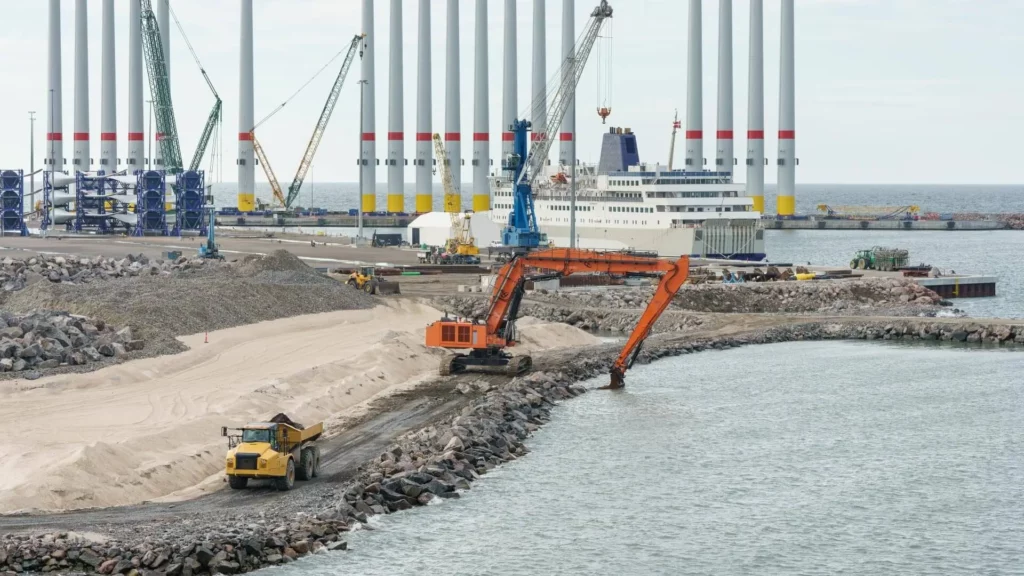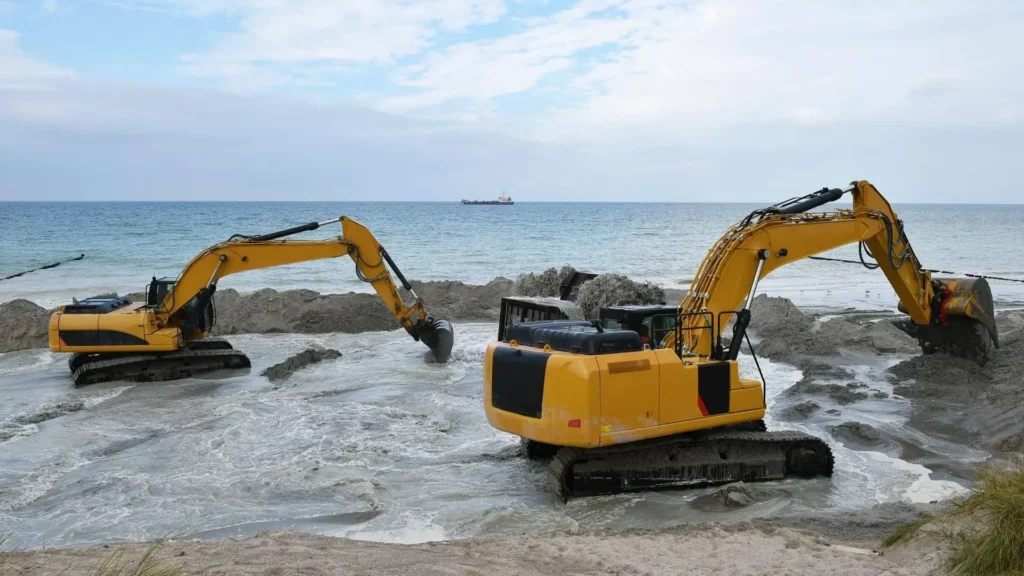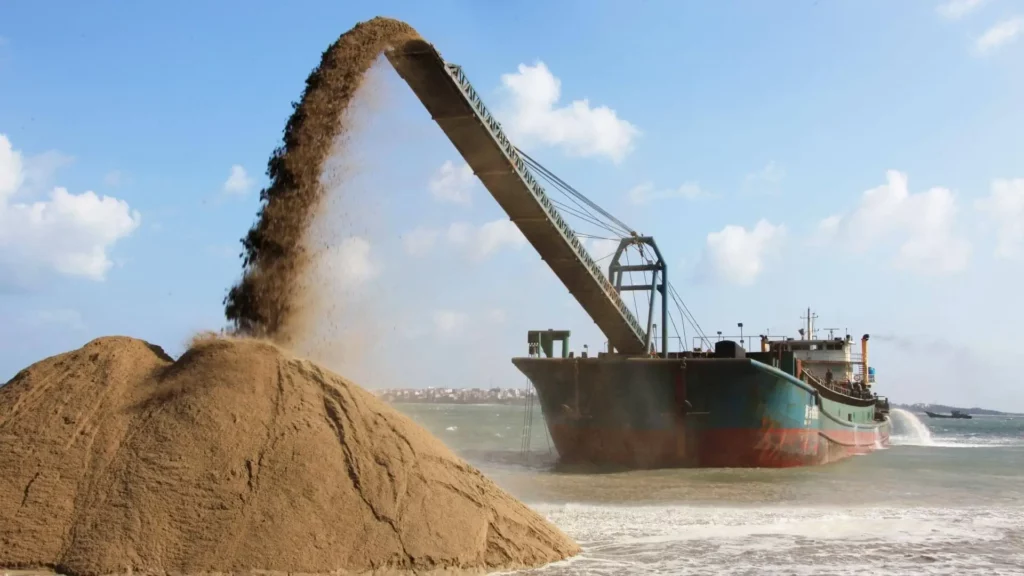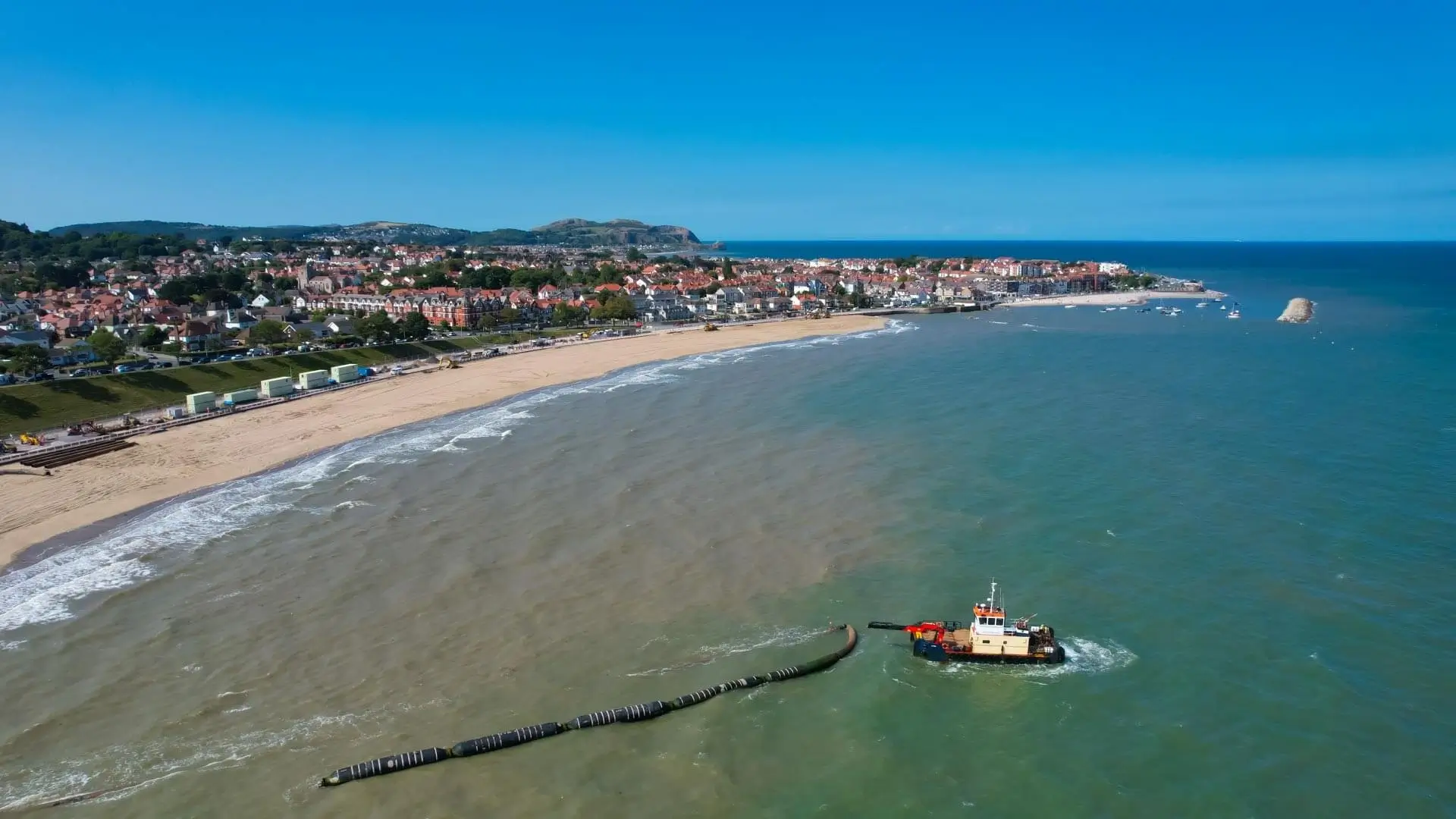Land reclamation, by definition, refers to the process of transforming previously unusable or degraded land into areas suitable for productive use. This could involve converting wetlands, deserts, or mining sites into land for agriculture, urban development, or industrial purposes. The land reclamation meaning extends to both improving natural landscapes and creating entirely new ones, often addressing the growing demand for space and resources.
Historically, land reclamation has been practiced for centuries. Ancient civilizations in regions like Mesopotamia and Egypt implemented early forms of land reclamation by building irrigation systems to cultivate arid lands. In more recent history, countries such as the Netherlands are renowned for reclaiming vast stretches of land from the sea, contributing to urban development and agricultural expansion.
Today, the scope of land reclamation has broadened significantly. Its modern applications range from constructing residential or industrial zones on reclaimed wetlands to rehabilitating degraded soils for farming. Mining land reclamation, for example, involves restoring landscapes affected by mining activities, such as open pits or tailing storage areas, to ensure environmental stability and sustainable reuse. Urban expansion in coastal or flood-prone areas often relies on filling land with soil or dredged materials to create new space for infrastructure.
However, land reclamation presents significant environmental challenges, such as habitat destruction, soil degradation, and ecosystem imbalance. At the same time, advancements in technology and sustainable practices offer innovative solutions to mitigate these impacts. From integrating eco-friendly materials to adopting restorative landscaping techniques, land reclamation can be both a practical and environmentally conscious endeavor.
Understanding Land Reclamation

Land reclamation involves transforming unproductive or unusable land into valuable, functional spaces. Land reclamation meaning encompasses efforts to restore degraded lands or create new areas for agriculture, urbanization, or industrial use. This process is vital in addressing the growing demand for land in regions facing natural constraints or degradation due to human activity.
Common Methods of Land Reclamation
- Filling Wetlands or Coastal Areas:
- One of the most common methods of land reclamation involves filling wetlands, shallow water bodies, or coastal zones with sand, soil, or other materials.
- Coastal reclamation is particularly prevalent in countries with limited landmass, such as Singapore, where new urban areas are created on reclaimed land.
- Mining Land Reclamation:
- Mining operations often leave behind degraded landscapes, including open pits, tailings, and disturbed ecosystems.
- Mining land reclamation focuses on restoring these areas to a stable and productive state, often through techniques like soil restoration, reforestation, or repurposing for agriculture or recreational use.
- Soil Improvement and Erosion Control:
- Reclaiming degraded lands involves enhancing soil fertility and controlling erosion.
- Methods like terracing, adding organic matter or using erosion-resistant vegetation help transform barren land into productive agricultural or green spaces.
Key Industries Utilizing Land Reclamation
- Agriculture:
- Reclaimed land is often used to expand farmland, especially in regions where arable land is scarce. Improved soil conditions and water management systems enable sustainable farming.
- Real Estate:
- Urban development frequently relies on land reclamation to create space for housing, commercial properties, and infrastructure. Coastal and waterfront areas are particularly desirable for high-value real estate projects.
- Mining:
- The mining industry heavily engages in land reclamation to restore post-mining landscapes, ensure compliance with environmental regulations, and contribute to sustainable development.
Environmental Impacts of Land Reclamation
While land reclamation offers solutions for land scarcity and economic development, it often has significant environmental repercussions. These impacts affect ecosystems, water quality, and the climate, necessitating careful planning and mitigation strategies.
Habitat Destruction
One of the most noticeable consequences of land reclamation is the loss of natural habitats. Wetlands, forests, and coastal zones are often transformed or filled to create usable land. This transformation disrupts ecosystems that support diverse wildlife species, leading to population declines or even the extinction of certain organisms. Coastal and marine habitats, such as mangroves and coral reefs, are particularly vulnerable to reclamation projects, which may eliminate crucial breeding grounds and feeding areas for aquatic and terrestrial species.
Soil and Water Contamination
Land reclamation often involves heavy machinery, dredging, and the use of construction materials, which can introduce pollutants into the environment:
- Pollution from machinery and materials: Oil spills, fuel leaks, and chemical runoffs from equipment can contaminate soil and water, reducing the quality of nearby ecosystems.
- Residual contamination in mining reclamation: In the case of mining land reclamation, areas impacted by mining operations may retain pollutants like heavy metals or toxic tailings, posing long-term environmental risks unless properly managed.
Ecosystem Imbalance
Reclamation projects frequently alter the natural balance of ecosystems:
- Water flow and sediment distribution: By filling coastal or wetland areas, reclamation can disrupt natural water channels, affecting sediment deposition and erosion patterns. This imbalance can degrade surrounding ecosystems, impacting agriculture, fisheries, and flood protection.
- Biodiversity loss: The displacement of native flora and fauna, coupled with changes in land use, can reduce biodiversity and create long-term ecological challenges.
Climate Impacts
Land reclamation also contributes to climate-related issues:
- Carbon emissions: Construction activities involved in land reclamation, such as dredging and transporting materials, generate significant greenhouse gas emissions.
- Vegetation removal and microclimates: Clearing vegetation to prepare land for reclamation reduces carbon sequestration and alters local climate conditions, often increasing temperatures and changing rainfall patterns.
Challenges in Land Reclamation

While land reclamation offers significant opportunities to expand usable land and restore degraded areas, it also presents a range of challenges that must be addressed to ensure successful and sustainable outcomes. From technical complexities to regulatory and community considerations, these hurdles highlight the need for thoughtful planning and innovative solutions.
Technical Challenges
- Restoring Heavily Degraded or Contaminated Lands:
- In areas requiring mining land reclamation, soils are often contaminated with heavy metals, toxins, or chemicals left behind from mining activities. Restoring these lands requires advanced remediation techniques, such as soil washing, stabilization, or phytoremediation, to make them safe and functional.
- Severely degraded landscapes, such as deserts or coastal areas, often lack the natural fertility needed for productive use, necessitating significant soil enhancement efforts.
- Addressing Subsidence and Soil Instability:
- Reclaimed lands, especially those created by filling wetlands or mining pits, often face issues with soil compaction and instability. Subsidence, or the gradual sinking of land, can compromise the structural integrity of buildings and infrastructure built in these areas.
- Engineering solutions, such as soil reinforcement or the use of geosynthetics, are often required to stabilize the land, adding complexity and cost to the reclamation process.
Environmental Regulations
- Compliance with Local and International Standards:
- Land reclamation projects must adhere to stringent environmental regulations, including the protection of natural habitats, water quality standards, and sustainable practices.
- The need for permits and regulatory approvals can slow project timelines and require ongoing monitoring to ensure compliance with laws governing wetlands, coastal zones, and mining areas.
- Balancing Economic Needs with Environmental Conservation:
- Projects often face the dual pressure of meeting economic development goals while minimizing environmental impact. Striking this balance is particularly challenging in projects involving mining land reclamation, where ecological restoration must align with local economic interests.
Community Concerns

- Opposition Due to Displacement or Cultural Loss:
- In some regions, land reclamation can dispense with local communities or destroy culturally significant sites, provoking public opposition.
- Addressing these concerns requires careful stakeholder engagement and the incorporation of community priorities into project planning.
- Environmental Risks:
- Communities may raise concerns about potential risks, such as flooding, pollution, or the destruction of local ecosystems, that could arise from large-scale land reclamation efforts. Transparent communication and risk mitigation strategies are crucial to gaining public trust.
High Costs and Long Timelines
- Financial Hurdles:
- Land reclamation projects, especially large-scale efforts like mining land reclamation, are capital-intensive. Costs include soil remediation, infrastructure development, and compliance with environmental regulations.
- Securing funding for these projects can be a challenge, particularly in developing regions with limited resources.
- Extended Timelines:
- The complexity of land reclamation projects often results in long timelines, which can delay economic benefits and increase overall costs. This is particularly true for projects involving extensive environmental restoration or technical remediation of contaminated sites.
Solutions for Sustainable Land Reclamation

Sustainable land reclamation practices aim to balance development needs with environmental preservation, ensuring that reclaimed land benefits both human activities and ecosystems. By incorporating innovative techniques, ecosystem restoration, and stakeholder collaboration, these solutions address the challenges of reclaiming degraded or unusable land.
Innovative Techniques
- Use of Eco-Friendly Materials and Technologies for Soil Restoration:
- Replacing conventional reclamation materials with eco-friendly alternatives, such as biochar or organic compost, helps restore soil fertility and reduce environmental harm.
- Advanced technologies like soil stabilizers and microbial inoculants enhance soil structure and nutrient availability, accelerating the reclamation process.
- Bioengineering Solutions Like Phytoremediation to Clean Contaminated Soils:
- Phytoremediation, the use of plants to absorb and neutralize contaminants, is particularly effective in areas requiring mining land reclamation. Species like poplars and willows can extract heavy metals and toxins, reducing soil contamination while improving land usability.
- These techniques are cost-effective and environmentally friendly, making them ideal for large-scale reclamation projects.
Integrated Ecosystem Restoration
- Designing Projects That Incorporate Habitat Creation and Conservation:
- Sustainable land reclamation projects integrate habitat creation, such as wetlands or wildlife corridors, into their designs. This approach supports biodiversity and compensates for the ecological impacts of reclamation activities.
- Using Native Vegetation to Restore Ecosystems:
- Reintroducing native plant species during reclamation stabilizes soil and reduces erosion. It also fosters the return of local wildlife. Native vegetation is well-suited to the local climate and requires minimal maintenance, ensuring long-term ecological balance.
Sustainable Mining Land Reclamation
- Repurposing Mining Sites for Agriculture, Renewable Energy, or Recreation:
- Post-mining landscapes can be converted into agricultural fields, solar farms, or public recreational spaces. This ensures that once-exploited lands contribute positively to the local economy and community well-being.
- Examples include converting open-pit mines into reservoirs or creating green spaces for tourism and leisure activities.
- Sealing and Detoxifying Tailings and Other Contaminants:
- Proper containment of mining byproducts is crucial in mining land reclamation. Techniques such as encapsulating tailings with impermeable layers or treating them with chemical stabilizers reduce the risk of contamination leaching into surrounding areas.
Stakeholder Collaboration
- Involvement of Environmental Scientists, Government Agencies, and Local Communities:
- Collaborative planning ensures that land reclamation projects meet environmental, regulatory, and community requirements. Environmental scientists provide expertise on ecosystem restoration, while government agencies ensure compliance with legal standards.
- Transparent Communication and Planning to Address Community Concerns:
- Engaging local communities early in the reclamation process builds trust and reduces opposition. Clear communication about the project’s goals, benefits, and mitigation measures helps address concerns about displacement, cultural impacts, or environmental risks.
By integrating these solutions, land reclamation can be approached in a way that aligns with both ecological preservation and sustainable development, especially in challenging scenarios like mining land reclamation. These practices ensure long-term benefits for the reclaimed land and surrounding environments.
Future of Land Reclamation
As global priorities shift toward sustainability and climate resilience, the future of land reclamation lies in innovative practices, advanced technology, and a commitment to ecological preservation. Emerging trends and strategies are shaping a more sustainable and efficient approach to transforming degraded or unusable land into valuable resources.
Emerging Trends in Sustainable Land Reclamation Practices
- Eco-Engineering Solutions: Sustainable reclamation projects increasingly integrate natural processes into land restoration efforts by using eco-engineering techniques, such as creating artificial wetlands or green buffers.
- Circular Economy in Reclamation: Recycling dredged materials or mining waste for use in reclamation projects reduces waste and minimizes the environmental impact.
- Carbon Neutral Reclamation Efforts: Incorporating renewable energy sources and low-carbon construction methods in reclamation projects is becoming a standard for reducing emissions.
Integration of Climate Resilience in Reclamation Projects
- Designing for Climate Adaptation: Reclamation projects are now incorporating features to address rising sea levels, increased flooding, and extreme weather conditions. This is particularly crucial for coastal and wetland reclamation projects.
- Restoring Natural Buffers: Rehabilitating mangroves, dunes, or vegetation around reclaimed areas provides natural protection against climate-related risks, such as storm surges or erosion.
- Building Resilient Infrastructure: Reclaimed land is being designed to support infrastructure that can withstand future climate uncertainties, ensuring long-term usability and safety.
Role of Technology in Planning and Monitoring
- GIS Mapping and Drones:
- Geographic Information Systems (GIS) and drones are critical in planning and monitoring land reclamation projects. They provide detailed topographic data, monitor project progress, and identify environmental changes in real time.
- These technologies allow for precise execution and help mitigate risks such as soil erosion or habitat disruption.
- AI and Predictive Analytics:
- Artificial intelligence is being used to model potential environmental impacts and optimize reclamation plans. Predictive analytics can forecast issues like soil instability or sediment displacement, enabling proactive solutions.
- AI-powered tools also streamline decision-making in mining land reclamation, ensuring compliance with environmental standards and maximizing efficiency.
Long-Term Benefits of Balancing Development with Ecological Preservation
- Sustainable Economic Growth: Land reclaimed with a focus on sustainability can support industries such as agriculture, renewable energy, and tourism, contributing to long-term economic growth.
- Biodiversity Conservation: Projects that incorporate ecosystem restoration and habitat creation promote biodiversity, fostering healthy and resilient ecosystems.
- Community Well-Being: Transparent, community-focused reclamation efforts enhance public trust, create recreational spaces, and improve local quality of life.
Conclusion
Land reclamation, defined as the transformation of unproductive or degraded land into valuable resources, has immense potential for driving sustainable development. From creating new urban spaces to rehabilitating mining sites, the practice addresses land scarcity while contributing to economic growth. However, land reclamation’s meaning extends beyond development, encompassing ecological restoration and long-term land use planning.
While reclamation offers significant benefits, it is not without its challenges. Habitat destruction, soil contamination, and ecosystem imbalance are critical concerns that require careful management. However, innovative solutions—such as eco-friendly technologies, climate-resilient designs, and collaborative planning—are paving the way for more sustainable approaches. These strategies not only mitigate environmental impacts but also ensure that reclamation projects align with global sustainability goals.
A balanced approach is essential, especially in mining land reclamation and other high-impact projects. Industry leaders, policymakers, and communities must adopt responsible practices that prioritize ecological preservation alongside economic progress. By embracing innovative techniques and fostering collaboration, land reclamation can continue to be a transformative tool for development while preserving the planet for future generations.



